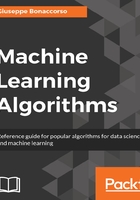
Only learning matters
What does learning exactly mean? Simply, we can say that learning is the ability to change according to external stimuli and remembering most of all previous experiences. So machine learning is an engineering approach that gives maximum importance to every technique that increases or improves the propensity for changing adaptively. A mechanical watch, for example, is an extraordinary artifact, but its structure obeys stationary laws and becomes useless if something external is changed. This ability is peculiar to animals and, in particular, to human beings; according to Darwin’s theory, it’s also a key success factor for the survival and evolution of all species. Machines, even if they don't evolve autonomously, seem to obey the same law.
Therefore, the main goal of machine learning is to study, engineer, and improve mathematical models which can be trained (once or continuously) with context-related data (provided by a generic environment), to infer the future and to make decisions without complete knowledge of all influencing elements (external factors). In other words, an agent (which is a software entity that receives information from an environment, picks the best action to reach a specific goal, and observes the results of it) adopts a statistical learning approach, trying to determine the right probability distributions and use them to compute the action (value or decision) that is most likely to be successful (with the least error).
I do prefer using the term inference instead of prediction only to avoid the weird (but not so uncommon) idea that machine learning is a sort of modern magic. Moreover, it's possible to introduce a fundamental statement: an algorithm can extrapolate general laws and learn their structure with relatively high precision only if they affect the actual data. So the term prediction can be freely used, but with the same meaning adopted in physics or system theory. Even in the most complex scenarios, such as image classification with convolutional neural networks, every piece of information (geometry, color, peculiar features, contrast, and so on) is already present in the data and the model has to be flexible enough to extract and learn it permanently.
In the next sections, there's a brief description of some common approaches to machine learning. Mathematical models, algorithms, and practical examples will be discussed in later chapters.